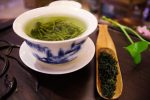Peptides — short chains of amino acids — are gaining a lot of attention as natural antioxidants in food and health science.
🌿 What are Antioxidant Peptides?
Antioxidant peptides are bioactive peptides derived from proteins, either through:
- Enzymatic hydrolysis (using proteases like trypsin or pepsin)
- Fermentation (with microorganisms that produce proteolytic enzymes)
- Food processing (like during cooking or ripening)
These peptides can scavenge free radicals and prevent oxidative damage in cells and food products.
⚡ How do Peptides Work as Antioxidants?
Peptides combat oxidative stress through several mechanisms:
- Free Radical Scavenging:
- Peptides with amino acids like cysteine, histidine, tryptophan, and tyrosine have strong radical-quenching abilities due to their electron-donating groups.
- Metal Chelation:
- Some peptides bind metal ions (like iron and copper), preventing them from catalyzing lipid oxidation reactions.
- Inhibiting Lipid Peroxidation:
- Peptides interrupt the chain reactions that convert lipids into harmful peroxides, helping maintain food quality.
- Boosting Endogenous Antioxidant Enzymes:
- Some peptides enhance the activity of natural antioxidants in the body, like superoxide dismutase (SOD) or glutathione peroxidase.
🍽️ Sources of Antioxidant Peptides
These peptides can be extracted from a variety of foods:
- Animal sources:
- Fish proteins (like from sardines or salmon)
- Dairy (casein and whey proteins)
- Meat (collagen hydrolysates)
- Plant sources:
- Soy protein (rich in glutamic acid and lysine)
- Legumes (pea and lentil proteins)
- Cereal proteins (wheat gluten, rice bran proteins)
🛡️ Applications in Food and Health
- Food preservation: Extending shelf life by preventing lipid oxidation in meat, fish, oils, and dairy.
- Nutraceuticals: Used in supplements to combat oxidative stress linked to aging and chronic diseases.
- Cosmetics: Incorporated into skincare to prevent oxidative damage to skin cells.
🚀 Why the Hype Around Peptides?
- Natural and safe: Compared to synthetic antioxidants (like BHA or BHT), peptides are seen as more “clean-label” and consumer-friendly.
- Bioavailability: Many peptides are easily absorbed, making them effective in both food systems and the body.
- Multifunctionality: Some peptides have additional benefits, like anti-inflammatory or antimicrobial properties.
Fermented Peptides
The main sources are fermented peptides-
- goat milk (kefir)
- milk (yoghurt)
- cheese
- sausages
- fish
- fish sausage
Cheese
Cheese itself also produces its own antioxidant peptides through fermentation. The formation of these peptides increases with fermentation (Yang, 2024).
References
Yang, W. (2024) Evaluation of the antioxidant activity and identification of potential antioxidant peptides in commercially available probiotic Cheddar cheese. LWT 205 116486


Leave a Reply